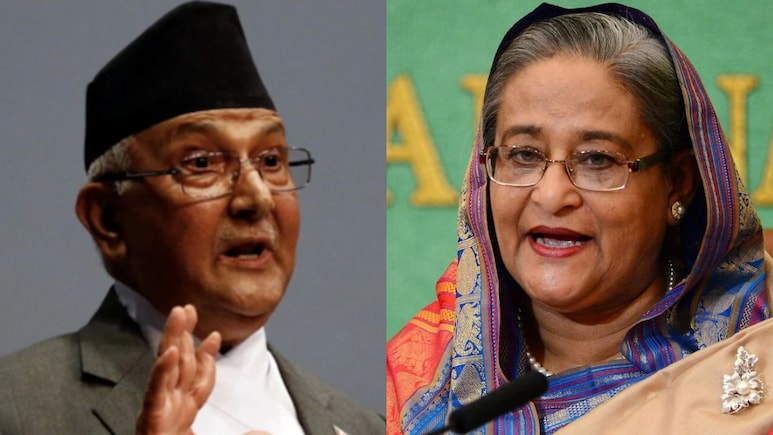
- Sheikh Hasina resigned as Bangladesh PM in August 2024 amid mass protests and fled to India
- A year later, KP Sharma Oli has stepped down as Nepal PM following nationwide protests
- Both leaders tried to crush popular movements, but were eventually ousted from power
August 5, 2024: Sheikh Hasina quits as Bangladesh Prime Minister in the face of massive protests against her government and flees to India.
September 9, 2025: KP Sharma Oli resigns as Nepal Prime Minister amid nationwide protests. Reports say he is planning to flee the country.
Two protests shook India's neighbourhood in two years, and both led to regime changes. As Kathmandu hurtles down Dhaka's way, a look at the striking similarities between the two anti-government movements that unseated those in power.
One Revolution To Another
The Awami League, now led by Sheikh Hasina, was at the forefront of the language movement in East Pakistan that eventually led to the birth of Bangladesh. Fifty years later, its role had reversed. A nationwide movement accused the Awami League government of being autocratic and took to the streets demanding Sheikh Hasina's ouster. The party, which led one revolution, was unseated by another.
In Nepal, radical leftists led the rebellion against the monarchy, and it was formally abolished in May 2008. The Communist Party of Nepal
(Unified Marxist-Leninist), to which ousted Prime Minister KP Sharma Oli belongs, was part of the coalition government that ended the monarchy. And now a public rebellion has forced him to resign as a section of Nepalese society seeks a return of the monarchy.
Youngsters Lead Movement
In Bangladesh, a platform named Students Against Discrimination led the nationwide protests against the Sheikh Hasina government. The group braved the State crackdown and pushed forward with their demand for regime change despite casualties. Eventually, they succeeded.
Those behind the Nepal protest call themselves Gen Z and initially took to the streets to agitate against a social media ban in the Himalayan country. The movement later snowballed into an all-out agitation against the current regime as protesters demanded that it be replaced. In this case, too, civilian deaths did not defuse the protests but flared them up.
Privilege Main Target
At the heart of the protests against the Sheikh Hasina government was a resistance against the reservation system that favoured descendants of the freedom fighters who participated in the Bangladesh independence movement. Young students, many of them born decades after the Liberation War, found this reservation unfair and felt they had limited job opportunities. A Supreme Court order in June last year sparked protests that eventually ousted Sheikh Hasina.
In Nepal, the protests that started against a social media ban expanded to a movement against corruption and politicians favouring their family members and relatives in government positions. The hashtag 'NepoKids' started trending as protesters accused government functionaries of leading lavish lives while the masses struggle to make ends meet.
Brute Force Does Not Work
In Bangladesh, over 1,500 protesters were killed as the Sheikh Hasina government cracked down hard against the agitation. But the deaths did not deter the movement. Instead, it spread through the country, and the crowds swelled. Eventually, the veteran leader had to flee the capital, Dhaka, as protesters stormed her residence.
Nepal, too, responded to the protests with an iron hand. Army and riot police tried to crush the first protest that began in Kathmandu. But the use of force only triggered a larger movement, with the agitation spreading to other areas. Nineteen people were killed as the KP Sharma Oli government cracked down. Initially, the Prime Minister refused to resign, but was eventually left with no option but to quit.
Track Latest News Live on NDTV.com and get news updates from India and around the world

